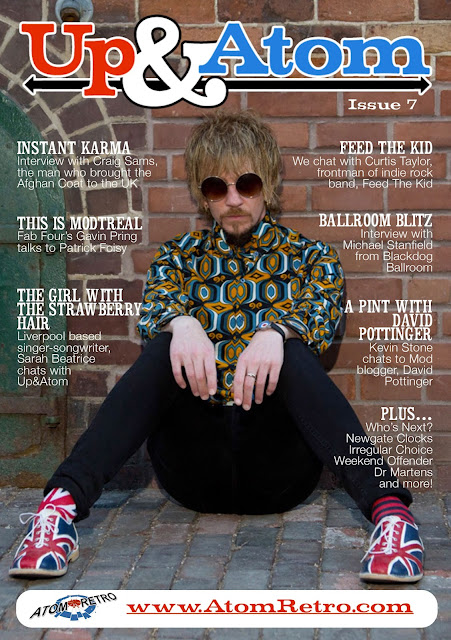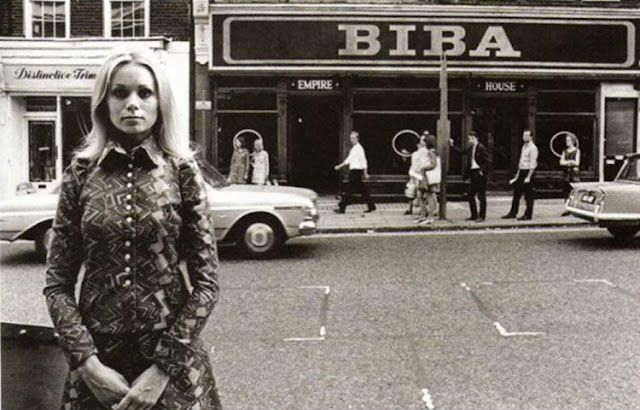Part three of our Mod hairstyles guide and we're into the 1970s and beyond. Along with your Mod wardrobe, your choice of hairstyle is part of your style, your image and who you are. The Seventies and into the eighties saw a backlash against the long, non-conformist hairstyles of the sixties and styles when to the other extreme, short, shorter and almost nothing at all.
1970s - 80s: The Weller Square Cut
Similar to: The Cesar Cut, The French Crop, The Other Steve Marriott Cut
A 70s version of the Cesar Cut or the French Crop, this square cut is as the name suggests, blunt, blockish and full of attitude. Harsher than most French Crop cuts, the style has a very short, mid forehead blunt fringe and squared, helmut style to sides and back. The hair is cut as short as you might expect as short back and sides, but with the added optional longer lengths at the sides and front. The hair is generally cut around the shape of the ear. This style can also be adapted as an Ivy League, Flat Top or crew cut style.
1970s - 80s: The Skinhead
Similar to: The Buzz Cut, The Flat Top, Suede head
A haircut so extreme that it gave it's name to a mod subculture! The Skinhead is, as you might guess, a cut so short they may have very little or no hair at all (to the desire of the wearer) - hence skinhead.
Skinhead culture started in the late sixties and peaked in the seventies and eighties. As a reaction and rejection to the conservative fifties and peace and love ethos of the sixties, Skinheads went for a much more severe and dramatic look, incorporating mod fashion and Jamaican Rudy Boy culture. Most first wave skinheads wore their hair at a three or two grade length - short, but not bald. Towards the end of the seventies, most skinheads had a grade two or shorter, with an optional side parting shaved in. Into the eighties, most skinheads cut their hair with no guard or shaved it completely with a razor.
1970s - 80s: The Flat Top
Similar to: The Flat Top, The Ivy League, The Rude Boy
The Flat Top is a short haircut where the hair on the top of the head is usually standing upright and cut to form a flat-appearing deck. This deck may be level, or it may be upward or downward sloping. With it's roots in military fashion, it might be surprising to learn that the Flat Top has been around since at least the early 20th century. A very popular look in the 1950s, it faded out of popularity in the 60s and 70s, but had a mod fashion resurgence in the 1980s and early 90s (possibly as a less severe alternative to the Skinhead look).
The haircut is usually created with electric clippers utilising the clipper over comb technique, though it can also be cut shears over comb or freehand with a clipper. The exact length is dependent on skull shape and the style of flat top.
Further Reading:
 |
| Paul Weller in his Jam and Square Cut days |
Similar to: The Cesar Cut, The French Crop, The Other Steve Marriott Cut
A 70s version of the Cesar Cut or the French Crop, this square cut is as the name suggests, blunt, blockish and full of attitude. Harsher than most French Crop cuts, the style has a very short, mid forehead blunt fringe and squared, helmut style to sides and back. The hair is cut as short as you might expect as short back and sides, but with the added optional longer lengths at the sides and front. The hair is generally cut around the shape of the ear. This style can also be adapted as an Ivy League, Flat Top or crew cut style.
 |
| Chas Smash from Madness with a slightly longer than some skinhead cuts. |
Similar to: The Buzz Cut, The Flat Top, Suede head
A haircut so extreme that it gave it's name to a mod subculture! The Skinhead is, as you might guess, a cut so short they may have very little or no hair at all (to the desire of the wearer) - hence skinhead.
Skinhead culture started in the late sixties and peaked in the seventies and eighties. As a reaction and rejection to the conservative fifties and peace and love ethos of the sixties, Skinheads went for a much more severe and dramatic look, incorporating mod fashion and Jamaican Rudy Boy culture. Most first wave skinheads wore their hair at a three or two grade length - short, but not bald. Towards the end of the seventies, most skinheads had a grade two or shorter, with an optional side parting shaved in. Into the eighties, most skinheads cut their hair with no guard or shaved it completely with a razor.
 |
| Suggs from Madness with a variation of the Flat Top hairstyle |
Similar to: The Flat Top, The Ivy League, The Rude Boy
The Flat Top is a short haircut where the hair on the top of the head is usually standing upright and cut to form a flat-appearing deck. This deck may be level, or it may be upward or downward sloping. With it's roots in military fashion, it might be surprising to learn that the Flat Top has been around since at least the early 20th century. A very popular look in the 1950s, it faded out of popularity in the 60s and 70s, but had a mod fashion resurgence in the 1980s and early 90s (possibly as a less severe alternative to the Skinhead look).
The haircut is usually created with electric clippers utilising the clipper over comb technique, though it can also be cut shears over comb or freehand with a clipper. The exact length is dependent on skull shape and the style of flat top.



































